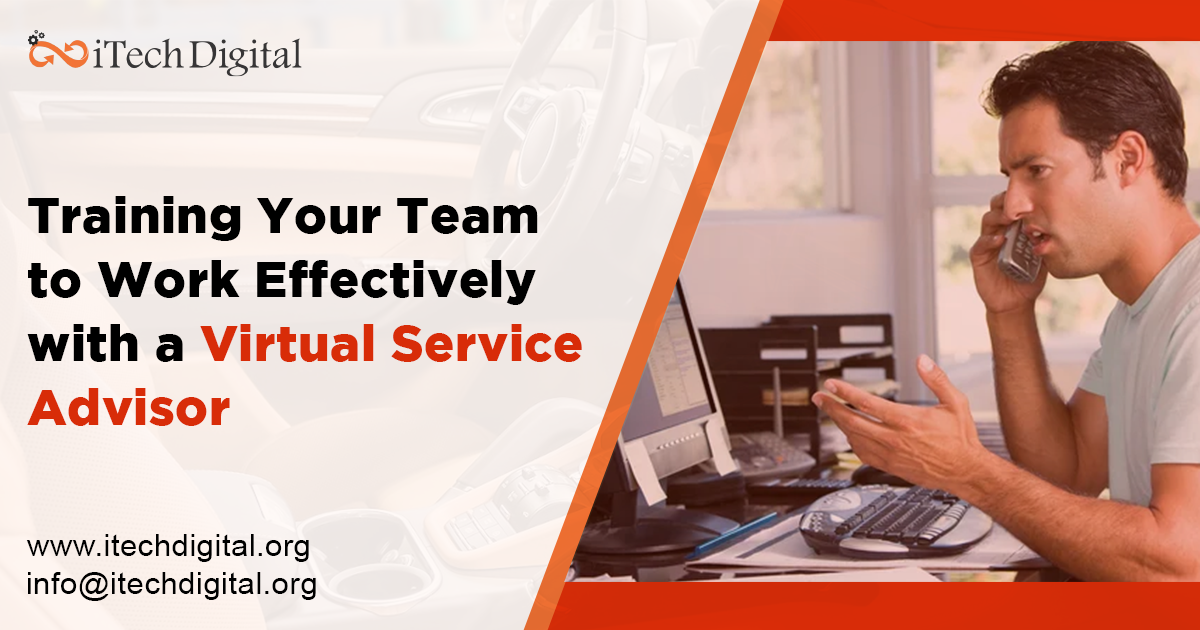Training Your Team to Work Effectively with a Virtual Service Advisor
To ensure your team works effectively with a virtual service advisor, it’s essential to focus on communication, adaptability, and tech proficiency. Start by training your staff on the virtual advisor’s software and tools, emphasizing the importance of clear and concise communication. Encourage adaptability, as the virtual advisor will require your team to adjust to new processes and workflows. Regular feedback sessions help identify any challenges and refine the interaction between your team and the virtual advisor. Fostering a collaborative culture where team members understand the virtual advisor’s role in enhancing customer service can lead to smoother operations and improved customer satisfaction. Training your team to work effectively with a virtual service advisor involves several key strategies to ensure seamless collaboration and productivity. Here’s a comprehensive guide to help you optimize this relationship.
Understanding the Role of a Virtual Service Advisor
A virtual service advisor (VSA) is typically responsible for handling customer inquiries, providing support, and managing tasks that can be executed remotely. Their role is crucial in enhancing customer experience and streamlining operations, particularly in a virtual work environment.
Key Strategies for Training Your Team
1. Establish Clear Communication Protocols
Effective communication is the backbone of any successful virtual team.
Preferred Communication Channels:
Identify and agree on the best communication methods (e.g., email, Slack, Zoom) early in the relationship. This ensures that everyone is on the same page and can respond promptly to inquiries and updates.
Regular Check-ins:
Schedule consistent meetings to discuss progress, address concerns, and provide feedback. Depending on the workload and team dynamics, these could be weekly or bi-weekly.
2. Set Measurable Goals and Expectations
Define clear, measurable objectives for the VSA and the team.
SMART Goals:
Goals should be Specific, Measurable, Achievable, Relevant, and Time-bound. This clarity helps track performance and ensure accountability.
Performance Metrics:
Establish key performance indicators (KPIs) to evaluate the VSA’s effectiveness. Regular reviews of these metrics can help make informed decisions and adjustments as needed.
3. Provide Comprehensive Training
Training is essential for the VSA and the in-house team to understand each other’s workflows and expectations.
Onboarding Process:
Develop a structured onboarding program that introduces the VSA to the company culture, tools, and specific tasks they will handle. This could include walkthroughs of software and systems used within the organization.
Skill Development:
Encourage ongoing training opportunities for the VSA to enhance their skills. This could involve online courses or workshops focused on productivity tools and customer service best practices.
4. Foster a Collaborative Environment
Creating a sense of belonging and teamwork is vital for morale and productivity.
Inclusive Practices:
Involve the VSA in team discussions and decision-making processes. This will not only make them feel valued but also allow them to contribute unique insights that can enhance team performance.
Celebrate Achievements:
Recognize and celebrate the contributions of the VSA as part of the team. This can boost motivation and reinforce their role within the organization.
5. Leverage Technology
Utilizing the right tools can significantly enhance collaboration and efficiency.
Task Management Software:
Implement tools like Trello or Asana to assign tasks, track progress, and facilitate communication. These platforms help keep everyone aligned on priorities and deadlines.
Automation Tools:
Explore automation options for repetitive tasks to free up the VSA for more complex responsibilities. This can improve efficiency and reduce errors in task execution.
Conclusion
Training your team to work effectively with a virtual service advisor requires a strategic approach emphasizing communication, goal-setting, training, collaboration, and Technology. By implementing these strategies, you can create a productive and cohesive virtual team that enhances your organization’s overall performance and customer satisfaction.









